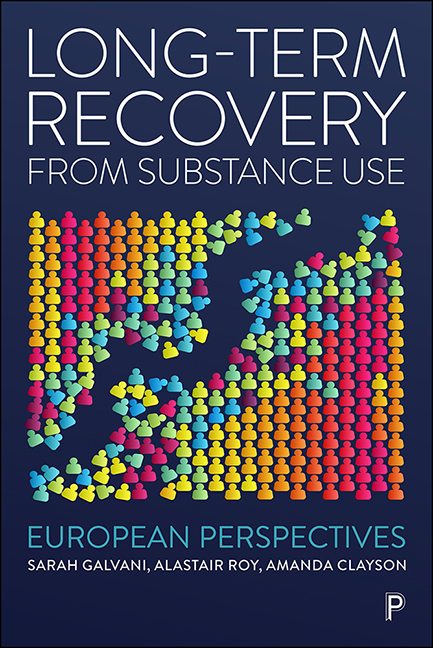4 - Change processes in long-term recovery for individuals with present and former substance-use dependence
Published online by Cambridge University Press: 15 September 2022
Summary
Introduction
This chapter aims to describe the diverse long-term change processes that are often required when individuals with present or former substance dependence want to develop meaning and purpose in their lives. It draws on the author's work in a Norwegian study, the Stayer study, that involves long-term follow-up of people who use, or previously used, substances (Svendsen et al, 2017) . A brief summary of the nature and extent of substance use in Norway, the welfare state model and organisation of substance-use treatment services is presented. The chapter continues with a description and discussion of how the multifaceted term ‘long-term recovery’ is linked to substance dependence and substance-use recovery research. Several examples from the Norwegian Stayer study are provided to illustrate the value of long-term research on change processes in substance-use recovery. Finally, practical improvements for long-term recovery services and research regarding individuals with both present and former substance-use dependence are suggested.
The nature and extent of substance use in Norway
Compared to most European countries, Norway has a low prevalence of inhabitants that use substances, including alcohol and cigarettes. Cannabis is the most commonly used illicit drug in Norway. In 2017, one in ten young adults reported cannabis use in the previous 12 months, while use of other illicit substances such as MDMA, ecstasy and cocaine is reported to be significantly lower; substance use is mostly reported by young adults, with higher prevalence rates among males than females (EMCDDA, 2019). The number of high-risk drug users in Norway, linked to injecting amphetamines and opioids, primarily heroin, was estimated at around 8,700 in 2016 (2.5 per 1,000 inhabitants aged 15–64 years). Drug-induced deaths among adults (15–64 years) was 75 deaths per million in 2016, the main intoxicant in drug-related deaths being the prescription opioids morphine and oxycodone, surpassing heroin as the most common opioid in overdose deaths (EMCDDA, 2019).
Norwegian government policy and services for substance use
The Nordic welfare state model emphasises activating social policies, such as pension reforms, to stimulate the labour supply, aiming to ensure that every member of society can benefit from the social security net that is made possible through the redistribution of income through tax systems (Dølvik and Martin, 2015).
- Type
- Chapter
- Information
- Long-Term Recovery from Substance UseEuropean Perspectives, pp. 40 - 52Publisher: Bristol University PressPrint publication year: 2022



